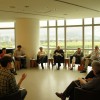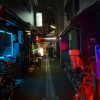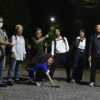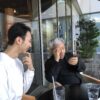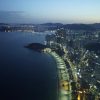Vol.65 Night Walk: Ikebukuro-Investigating the nightscape of Ikebukuro–a city that escaped the clutches of disappearance
2019.11.15
Tomoya Furukawa+Shinichi Sakaguchi+Wen Yan Zhang+Noriko Higashi
Toshima-ku is aiming to be a city known worldwide as a center for art and culture. At their plan’s center lies within the redevelopment of Ikebukuro. We focused our investigation on the light of the parks within their redevelopment and compared it with Shibuya and Shinjuku.
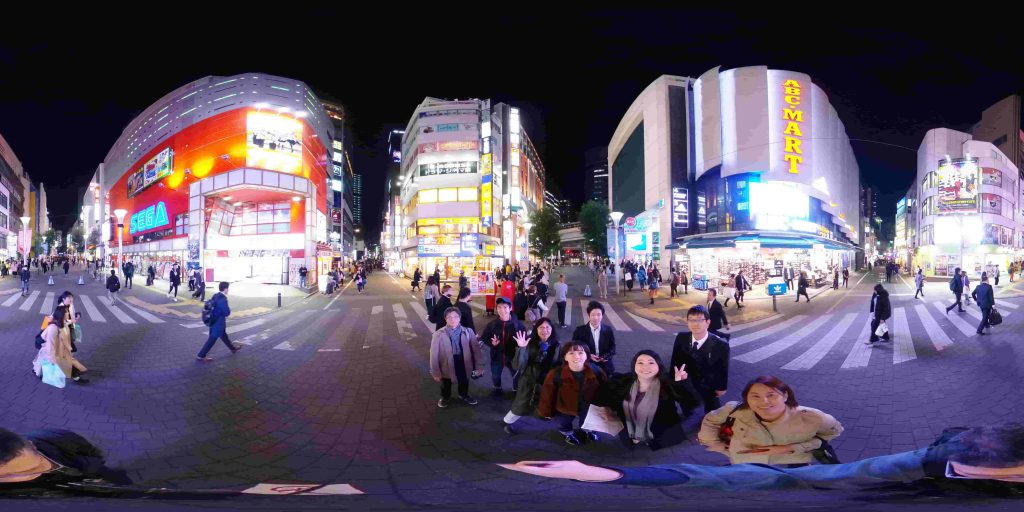
A 360 degree photo of Sunshine Street bursting with white light
Group 1: JR Ikebukuro→Nakaikebukuro Park→Sunshine60→West Ikebukuro Central Park
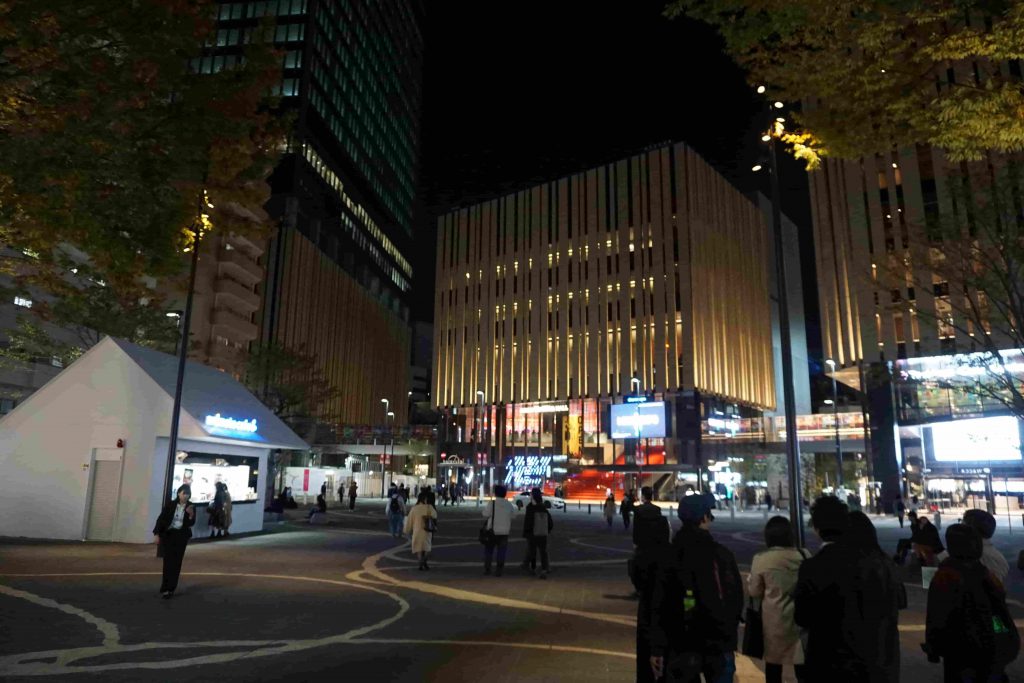
Nakaikebukuro Park and HAREZA creating a good mood. The red staircase stands out
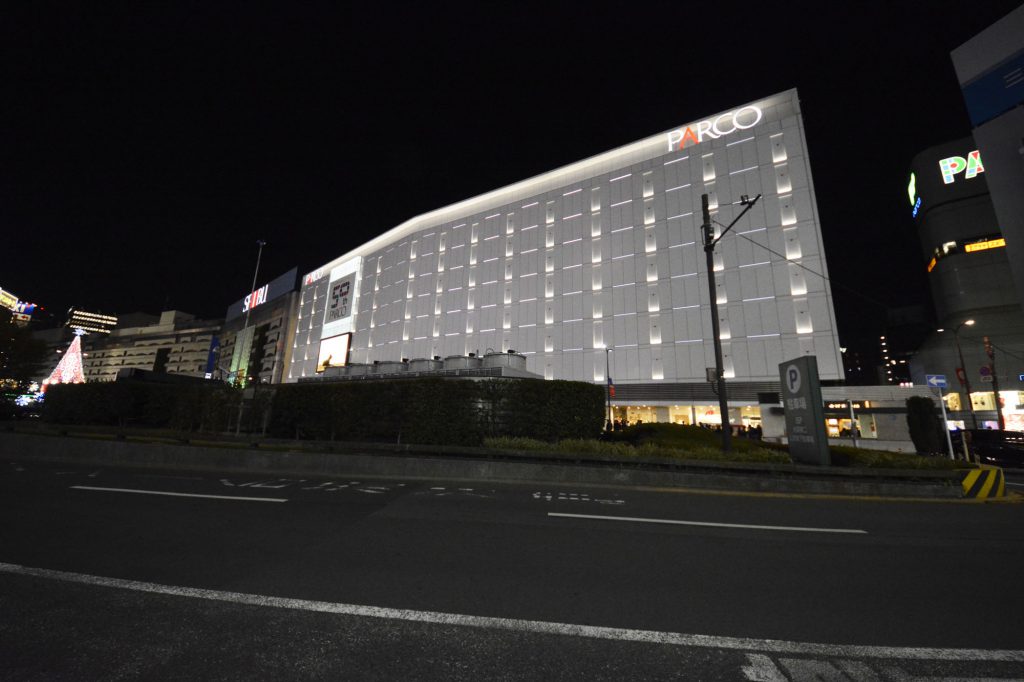
The white façade on PARCO leaves a good impression
Group 1’s main objectives for their investigation was the newly opened HAREZA and the renewed Nakaikebukuro Park. We started out nicely with the well-coordinated white façade of the PARCO and Maker’s logo, and the well-rounded Bic Camera’s façade, but soon we were disappointed by the excessive amounts of light that spilled from the stores. The pink Christmas decorations on the streetlights on Sunshine Street also got bad reviews from us. Some places showed an intention to create an exquisite or posh mood but it’s a mixed batch.
Our main objective this time: Nakaikebukuro Park was lit very evenly at a perfect brightness, allowing it to be a space suited for many purposes, deserving of many Hero calls. HAREZA’s red staircase that leads to the theater is highlighted and stands out even from far away, setting the mood for people headed there at night.
Next, we headed towards Sunshine 60 and Sunshine Street, which has been open for about 40 years now. The excessively bright lights that was everywhere in the area reinforced the ‘THE Ikebukuro’ stereotype that we all already had engrained in our brains. There were many ‘villain’ calls that arose due to this, but looking at the large number of people gathered around this area we thought that perhaps this is a different variation of light that catches visitors.
East Ikebukuro Central Park is surrounded in an eerie and frightful darkness. I have heard stories that this park used to be the execution grounds to this area, so naturally the people sitting in the dark seemed menacing, making me want to leave as soon as possible. As my eyes adjusted to the darkness, it became apparent that the park was brighter because of the light spillage from the tall buildings around it. But even just imagining the park without light just gives me the creeps. (Noriko Higashi)
Group 2: JR Ikebukuro East Exit→Green Street→Toshima Area Government office→Around South Ikebukuro Park
We started from Green Street. It was unique in that the mood created by the lighting and the streetlights changed every block. The streetlights were high color temperature lights that was there from before, but the brightness is lowered and avoids a glare, which reduced how much it irritated us.
As you walk down the street, the color temperature decreases and the fixtures changed to some looking like garden lights or spot lights with a little height to them. The mood it created was great but sadly it’s ruined by the fact that they shine right into your eyes and is way too bright.
The Toshima Area Government Office was developed alongside the skyscraper apartments around it. The lights on its staircase demonstrated great care to hide the lighting fixtures whilst beautifully lighting up the staircase.
We also walked along streets that were remnants from the past Ikebukuro. If you look at the High-rise apartment buildings from here, the residences’ lights have a nice lower color temperature, but it just accentuated the high color temperature of the Sunshine buildings offices.
Lastly, we explored South Ikebukuro Park. There were interesting lighting fixtures, like ones that were made to look like fruits on trees, creating a wonderful atmosphere in the park itself. Sadly, the light from the surrounding buildings were too bright causing glares even here in the park, ruining the mood.(Shinichi Sakaguchi)
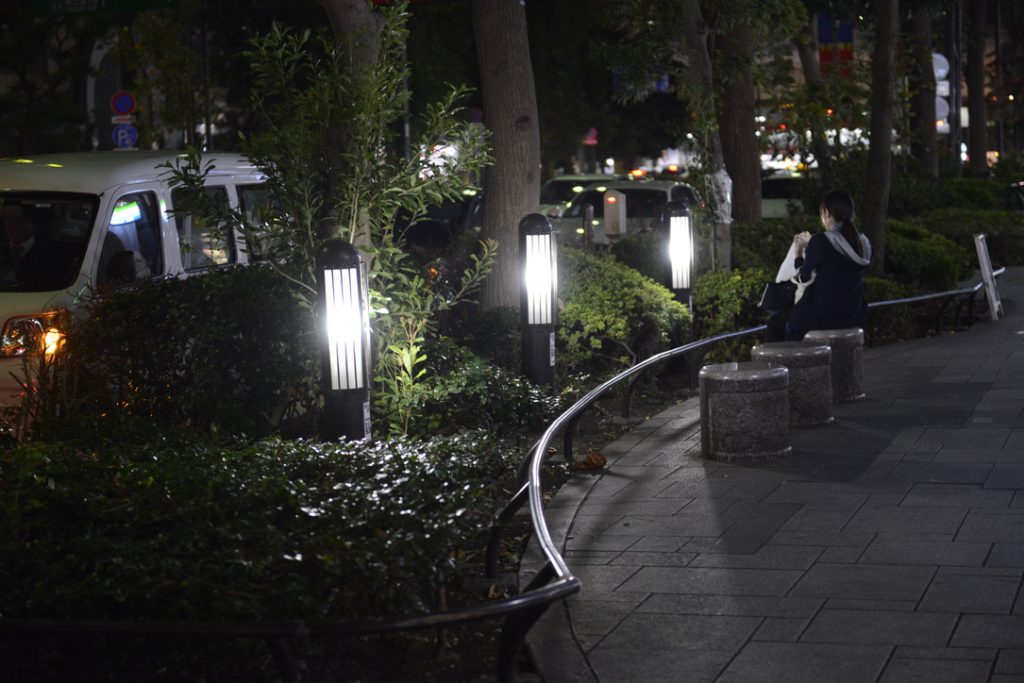
Green Street, the bollard lamps in front of the benches are too bright
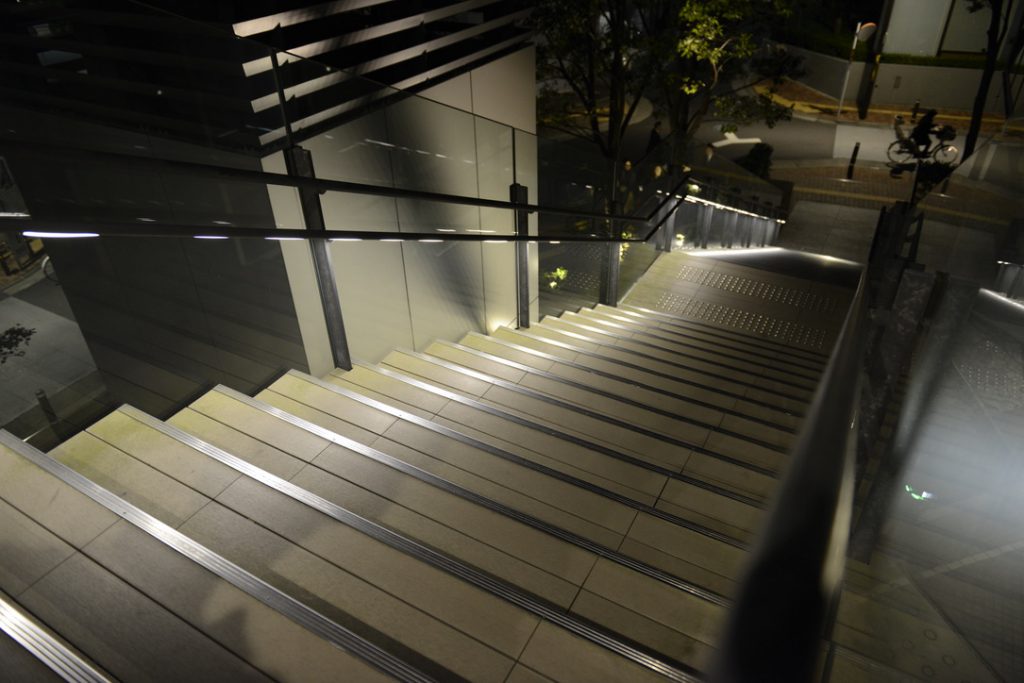
Staircase outside the Toshima government office. The lights don’t leave a glare in the eyes and got a good review from us
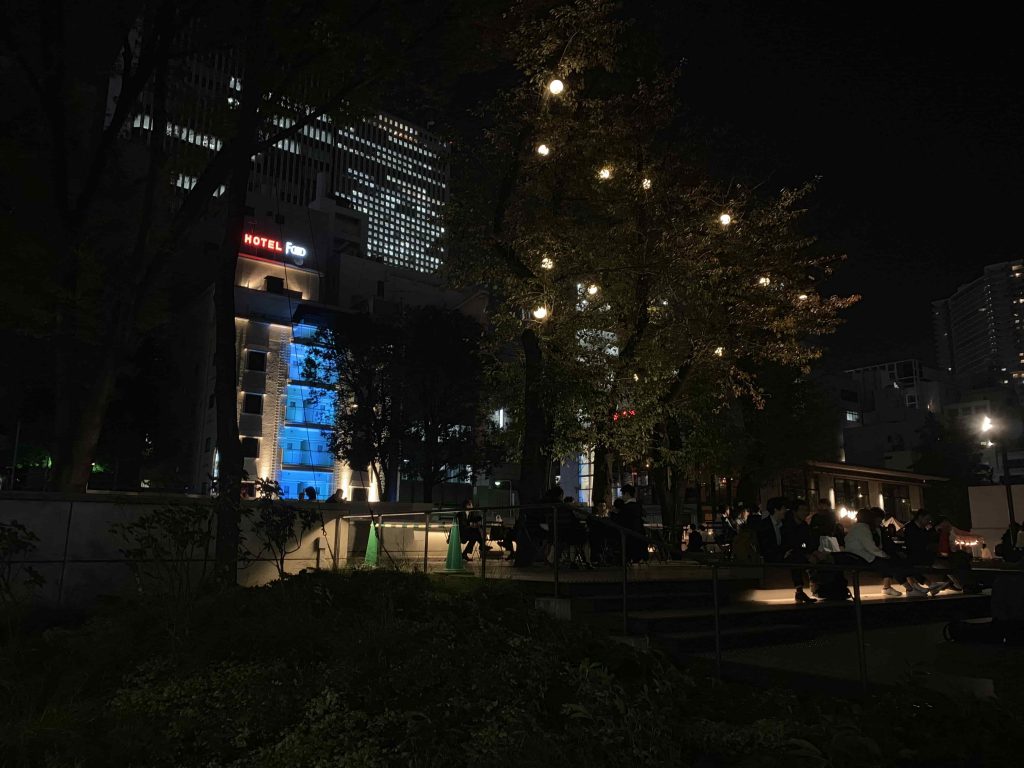
Lighting like fruits on the tree Lighting from neighbors ruins good atmosphere in the park
Group 3: Ikebukuro Nishiguchi Park → Jiyu Gakuen Myonichikan
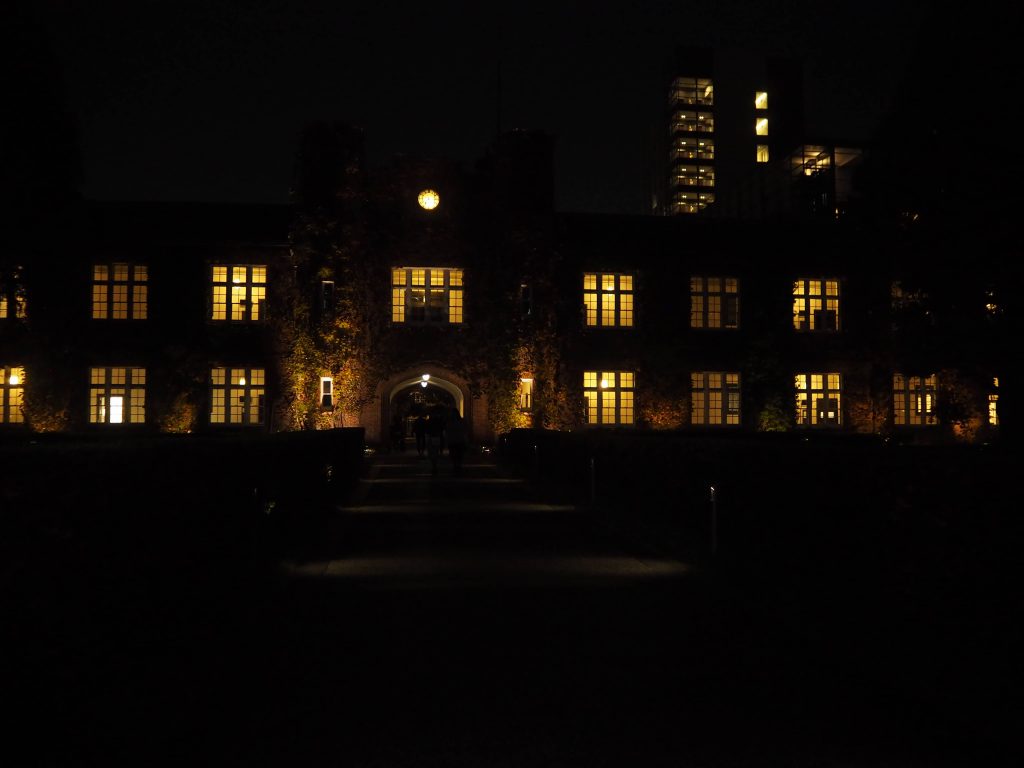
Ritsukyou University’s comforting lighting
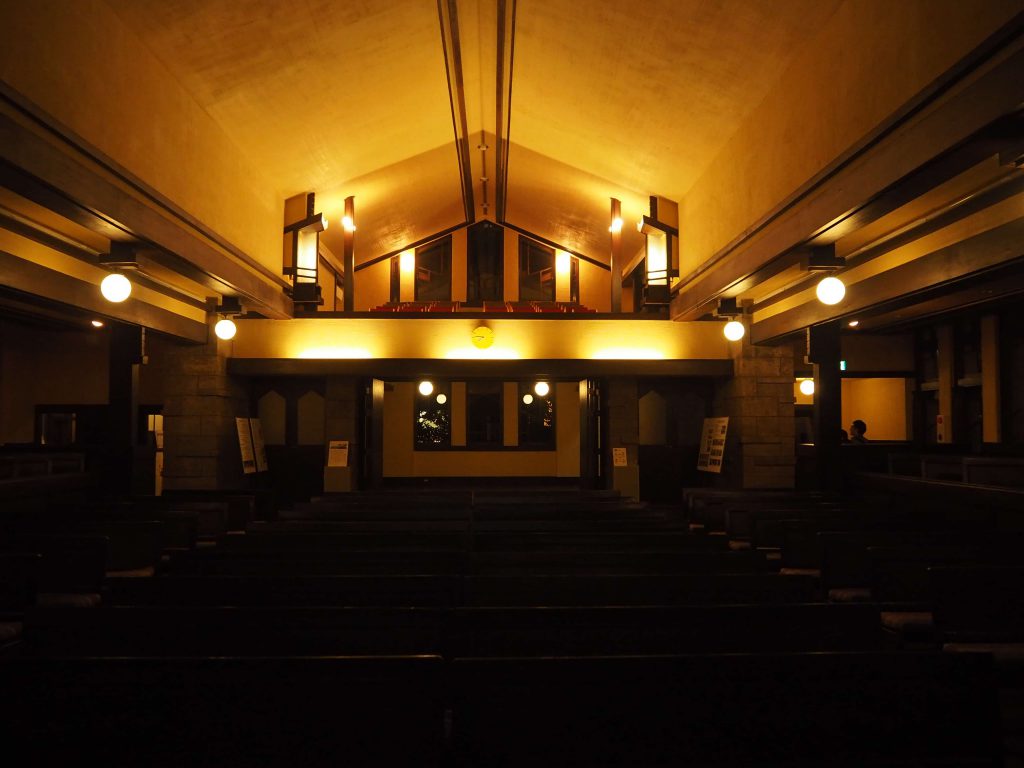
Jiyu Gakuen Myonichikan- A villain spotted within the comforting atmosphere!
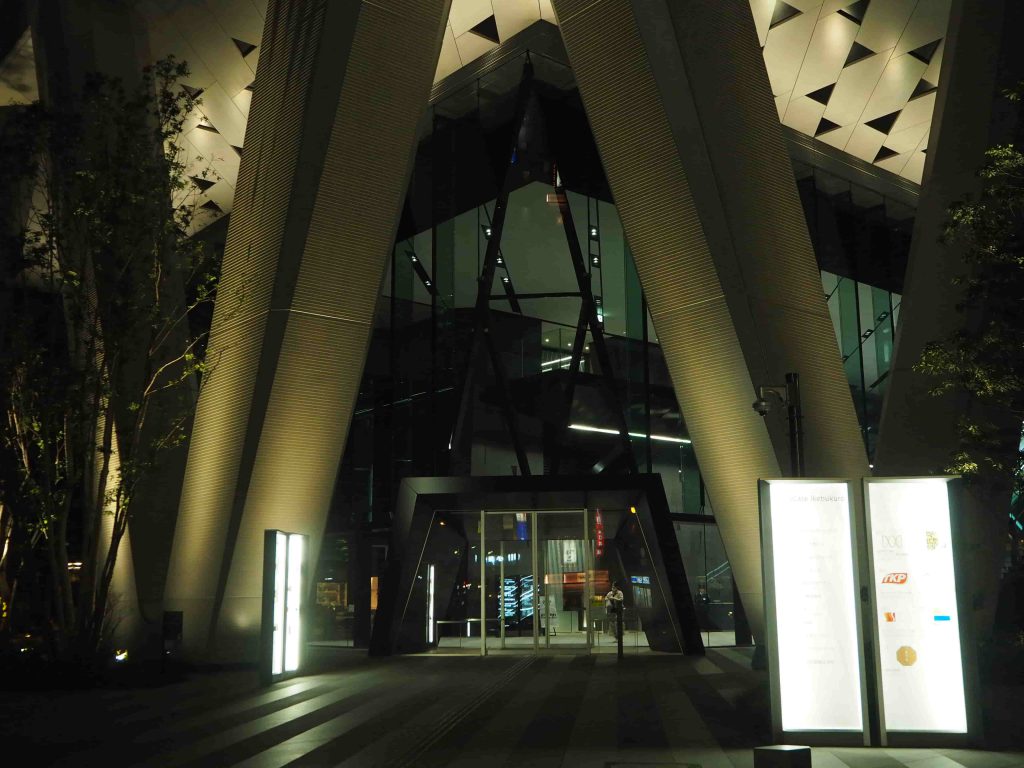
SEIBU Gate Depending on the angle, the signs’ lights are glaringly bright
Group 3 explored the area from Ikebukuro Nishiguchi Park to Jiyugakuen as our explorers for the Arts and School areas. We looked at new venues as well as historical buildings, learning about the light of the town on the way.
Group 3 first visited Rikkyo University. The university limited the amount of light that is shining on campus to select areas and the light from windows, creating a soothing atmosphere. The warm lighting that envelopes the buildings and the dimly lit courtyard contributes to this the most.
On the other hand, the streetlights around Rikkyo University emitted a cold white light, which felt out of place in comparison to the warm light with the low color temperature of the campus itself. There were opinions that it was disappointing as if the lights were a lower color temperature and worked on to reduce the glare, it would be perfectly synchronous to the campus.
We also visited the Jiyugakuen Myonichikan, which is a cultural heritage. The lighting design was impressive in addition to the spectacular glass windows, ceiling, and atrium. The round lighting fixtures they used emitted light that blended and meshed well with the architecture, leaving a good impression. We found out that it was designed for a color temperature of 2300K which is often associated with a calming effect. The crackling sounds and the waving flames coming from the fireplace added to this atmosphere. Many agreed that there is nothing that can beat fire, the origin of all light, which led to it being called a lighting Hero.
The disappointing part was the lighting above in the lecture hall. It seems they have recently switched to LED fixtures, but it doesn’t fit the space and doesn’t seem to be capable of changing like many stage lighting fixtures. Other villains we found in the area were the bright streetlights between Myonichikan Lecture hall and Jiyu Gakuen Myonichikan. These lights didn’t fit the surrounding area and therefore were declared a villain.
Lastly, we visited the SEIBU gate that opened this spring. We were all excited as it was new architecture, but there were things like the bench lights and signs that were too bright that harmed our impression of it.
Ikebukuro was full of architecture that had a lot of thought put into its lighting, but also non-uniform streetlights. The streetlights are different in areas and perhaps it’s for preventing crime.(Wen Yan Zhang)
Group 4: JR Ikebukuro North Exit→Mizuki Street→West Ichibangai Central Street→Romance Street→Tokiwa Street→Heiwa Street→Gekijyo Street→Tokyo Metropolitan Theater/Nishiguchi Park
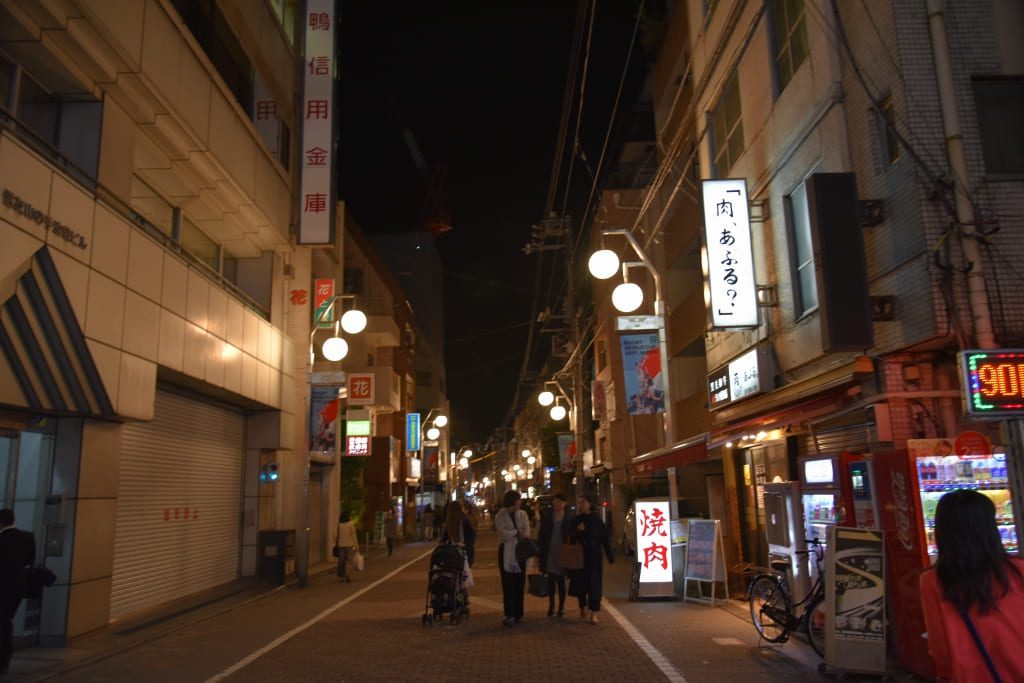
Heiwa Street The orange lights illuminate the alleys safely.
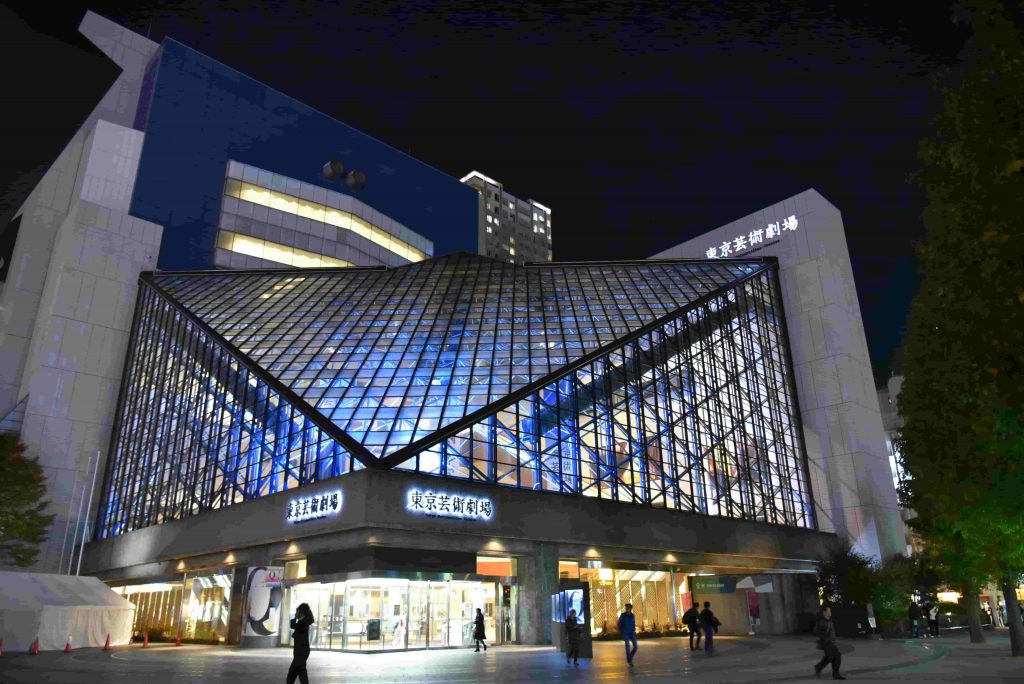
Tokyo Metropolitan Theater Lit with an elegant blue, giving the it a touch of color
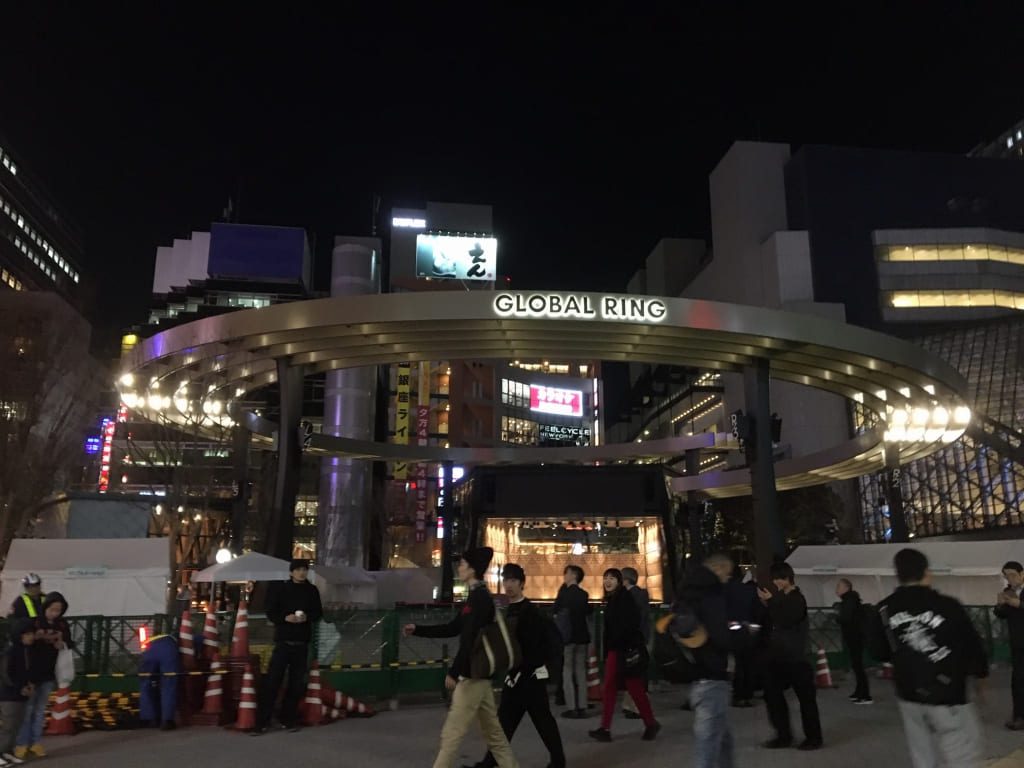
Global Ring The rings’ LED can be seen from people passing by
Group 4 explored the Kanrakugai area Northwest of Ikebukuro Station and Nishiguchi Park.
・Kanrakugai: Also called Chinatown, Kanrakugai is filled with a mixtures of restaurants, bars, and red-light district locations but due to the older buildings in the area, it lacks the flashy and bright advertisements that you see in similar areas in Shibuya and Kabukichyo. Therefore, while it is often identified as a famous location in Japan, it doesn’t have same punchy bright lights impression and instead gives off a lighting environment that is reminiscent of the Showa era.
There were many buildings that gave off lights that were way too colorful, or some stores that advertisement signs were bright white, showing a lack of care for the lighting environment. But within these, there was a ramen shop using a white wall and a red chili pepper as a sign that looked fancy and was well lit, being the standout hero of this environment.
The streetlights’ design varied with each street and this variety is one of the unique parts of this place. There would sometimes be lights that varied in not just design but also function within a single street. We identified the villains in the area as the replacement LED lights that had bad glare and the zombie LED lights that were barely on.
Thankfully, Heiwa Street at the end of the Kanrakugai, was lit with a warm orange colored streetlight and spaced evenly (50Lx Brightness on the Road), releasing our tension and safely lighting the area.
・Tokyo Metropolitan Theater & Renewed Nishiguchi Park: Tokyo Metropolitan Theater installed blue lights in three corners of the glass atrium that added a dash of blue to the architecture, while making the interior space relaxing and calming. Therefore, we decided to name it a hero.
As the space under the Global Ring is often used as a temporary outdoor stage, there are stage lights that are installed here that work with music and the fountain. Therefore, the performance and expressiveness of these light were prioritized when deciding positioning, angle, and brightness, which resulted in a disappointing glare. We are looking forward to contents that would calm and entertain visitors. (Tomoya Furukawa)
There are countless other renewals and construction going on other cultural facilities and parks within Ikebukuro. As we saw on this investigation, compared to Shinjuku and Shibuya, the brightness of the area is relatively lower and have more historical locations/buildings, which led to changes to our impression of Ikebukuro. (Noriko Higashi)





